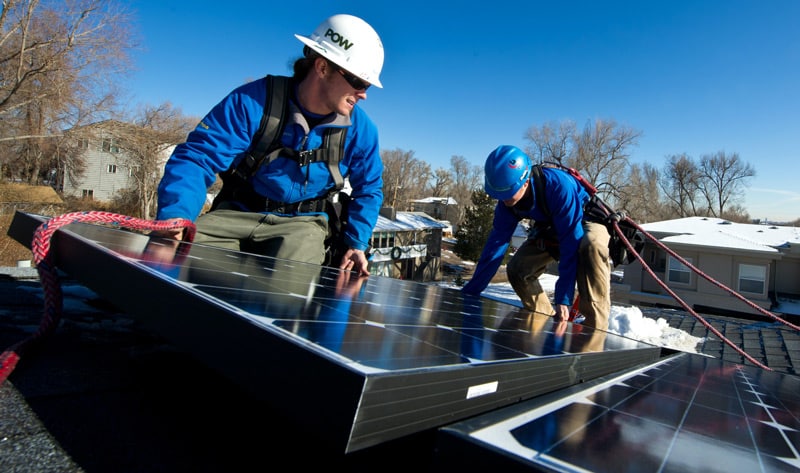Section 45L
New Energy Efficient Home/Dwelling Unit Credit

Background
The 45L Energy Efficient Home Tax Credit, originally established in 2005, has been extended to include any new, qualified energy-efficient homes through 2032. The recent Inflation Reduction Act of 2022 (IRA) further amended Internal Revenue Code Section 45L, providing eligible contractors with a tax credit for new or substantially reconstructed homes meeting ENERGY STAR home program or Department of Energy Zero Energy Ready Home (DOE ZERH) program requirements.
- Want to save even more on your taxes?
How It Works
To qualify for the 45L tax credit, an eligible contractor, builder, developer, or owner must construct a qualified energy-efficient dwelling.
Dwellings completed and occupied through 2022 must be at least 50% more energy efficient compared to International Energy Conservation Code (IECC) 2006, with at least 10% of energy savings resulting from the efficiency of the building envelope. If these requirements are met, a tax credit of $2,000 per home or unit can be claimed.
Dwellings completed and occupied as of 2023 must comply with either ENERGY STAR or the DOE ZERH program requirements to receive a tax credit of up to $2,500 or $5,000, respectively.

What Qualifies for Section 45L?
- Single Family Home
- Townhouses
- Apartments
- Condominiums
- Assisted Living
- Student Housing
Who Qualifies?
The taxpayer who built the property, had basis in the property during development, and then either sold, leased, or used the property for themselves, is eligible for the credit.
Required Items for the Study
Basic information, such as the property address and the number of units, is needed. Additionally, building plans and information about insulation, windows, lighting, and HVAC systems are required.
How will Section 45L Affect My Tax Return?
The 45L tax credit is a general business credit that can offset tax dollar for dollar. It is claimed on tax form 8908. For example, 85-unit assisted living facility completed and occupied in 2024 could be eligible for a tax credit of up to $425,000.
45L Energy Efficient Dwelling Unit Tax Credits
If you develop, build, renovate, or own energy-efficient residential dwelling units, you could earn tax credits of $5,000 per unit.
To qualify for the tax credit, eligible dwelling units must be certified to meet or exceed the required energy efficiency benchmarks, and then sold or leased. Although the credit can be taken against single-family housing units, you can also leverage this opportunity for townhomes, condominiums, senior housing, and other types of property, as long as the property meets the necessary criteria. Fortunately, today’s energy-conscious building codes and efficiency standards mean that your properties may already qualify.
To take advantage of this valuable, cost-saving incentive, however, you must engage a qualified, third-party professional RESNET certified HERS Rater to provide the certification documents necessary to apply for the available tax credit.
Understanding the 45L Energy Efficient Residential Tax Credit
Under Title 26, U.S. Code § 45L, New energy efficient home credit, the federal government provided a significant incentive for investors to develop energy-efficient dwellings. Units can be either rental properties or owner-occupied residences. However, the property must be sold, rented, or leased to a residential user during the tax year in which you wish to take the credit.
This program was originally introduced in 2005. It has been extended over the past decade, most recently in December 2022, through the end of 2032. The program is retroactive for three years or for any open tax year you have on your books.
The value of this incentive can increase exponentially, if you develop multi-unit dwellings, providing $5,000 in direct tax credit per certified unit. This is a dollar-for-dollar tax offset (not a deduction), which directly reduces your tax liability to the IRS. For a 150-unit complex, for example, you could earn $300,000 in tax credit, any unused portion of which you can carry over for up to 20 years.
Properties That Qualify for 45L Tax Credits
A qualified new energy-efficient home is any dwelling unit – including townhomes, apartments, condos, dorms, senior housing, and single-family homes – that is located within the United States and that meets the following criteria:
- Constructed and occupied during the last 3 tax years,
- Finished height of three floors or less if constructed and occupied before 2023, and
- Meets the energy savings, ENERGY STAR, or ZERH requirements.
Dwellings constructed and sold or leased through 2022 require energy savings a rate of 50% or below the level of a comparable unit, with at least 10% of energy savings provided by the building envelope, compared to IECC 2006.
Dwellings constructed and sold or leased after 2022 require full compliance with either ENERGY STAR or ZERH program requirements, including a mid-construction inspection.
It is important to note that you may be able to apply for the 45L credit for properties that have undergone substantial reconstruction or renovation. However, the energy efficiency, ENERGY STAR, or ZERH requirements may vary somewhat under these circumstances. Consulting with an experienced 45L certification provider is the best way to determine whether your property qualifies for the incentive.
Requirements to Leverage Tax Credits for Energy Efficiency
To claim your energy-efficient dwelling tax credit, you must provide a detailed project analysis and certification report with your application.
The report provider must be a qualified, unrelated, third-party entity, and the report must be signed off by an eligible certifier.
Obtaining the required analysis and certification, which typically involves a review of construction documents, a site visit, and a detailed analysis using sanctioned software, does require a small investment.
To help you determine if you qualify for this tax incentive, Cost Segregation Authority offers a free benefits analysis. Contact us today to learn more, or to request your free 45L energy-efficient dwelling tax credit pre-analysis.


